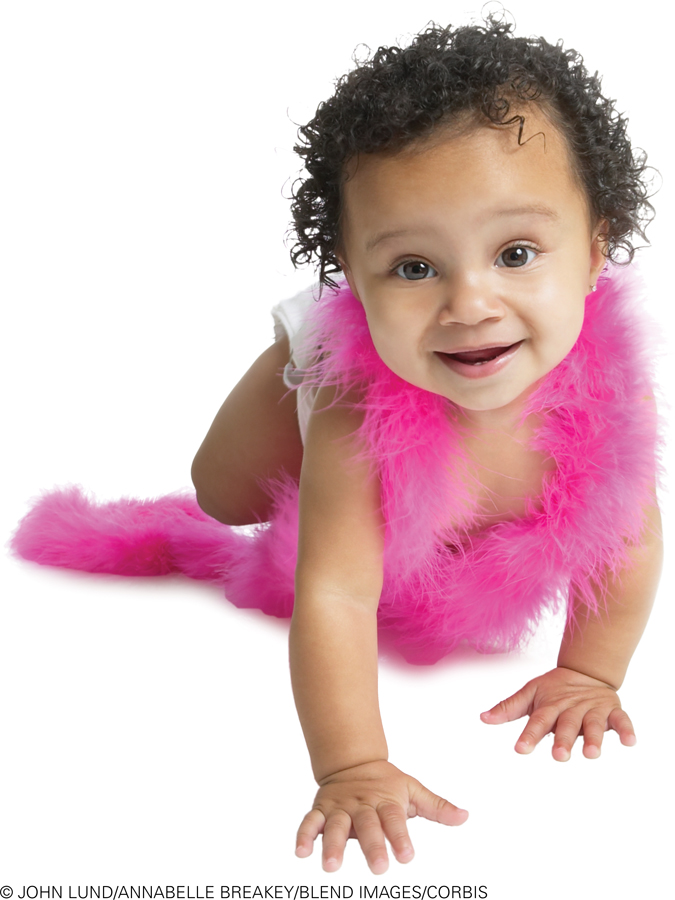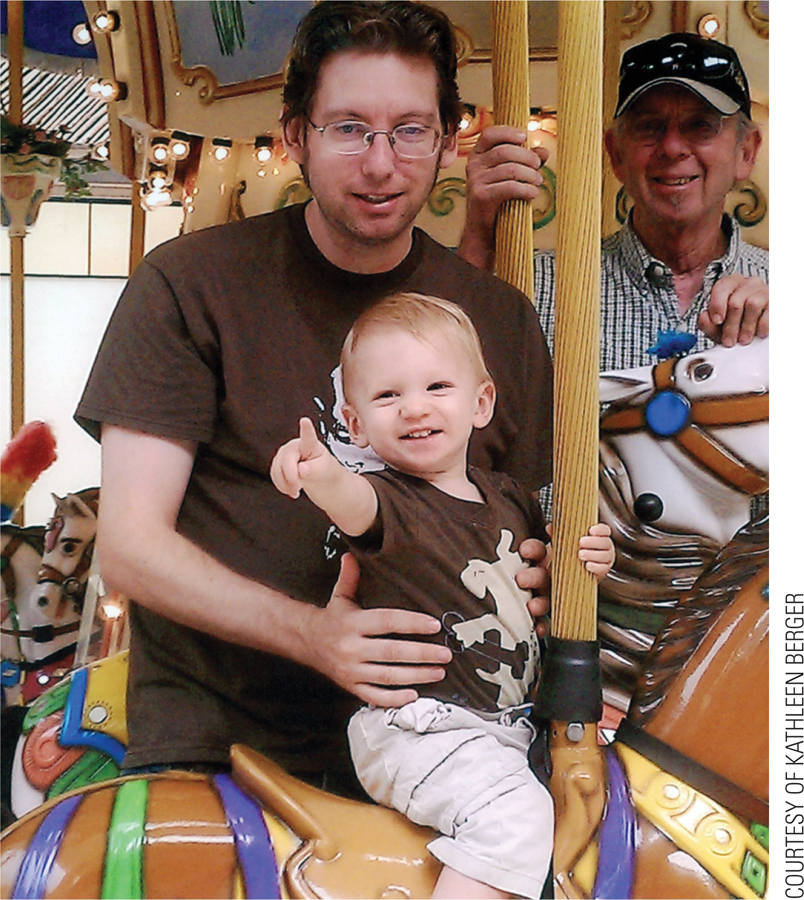
What Will You Know?

How do smiles, tears, anger, and fear change from birth to age 2? The social smile, evoked by seeing a human face, emerges at about 6 weeks. Infants worldwide express social joy and laughter between 2 and 4 months. Anger is evident at 6 months, usually triggered by frustration. Fear in response to some person, thing, or situation is evident at about 9 months and soon becomes more frequent and obvious. Emotions take on new strength during toddlerhood. For example, throughout the second year and beyond, anger and fear become less frequent but more focused, targeted toward infuriating or terrifying experiences. Similarly, laughing and crying are louder and more discriminating.
Does a baby’s temperament predict lifelong personality? Temperament is not the same as personality, although temperamental inclinations may lead to personality differences. Generally, personality traits are learned, whereas temperamental traits are genetic.
What are the signs of a secure attachment between parent and infant? Infants with secure attachment (type B) feel comfortable and confident. The caregiver is a base for exploration, providing assurance and enabling discovery. A toddler might, for example, scramble down from the caregiver's lap to play with an intriguing toy but periodically look back and vocalize (contact–maintaining) or bring the toy to the caregiver for inspection (proximity–seeking). Among the general population, about two–thirds of infants are secure (type B). Their mothers' presence gives them courage to explore; her departure causes distress; her return elicits positive social contact (such as smiling or hugging) and then more playing. The infant's balanced reaction—being concerned but not overwhelmed by comings and goings—indicates security.
What are opposing theories about the development of infant emotions? From the perspective of behaviorism, emotions and personality are molded as parents reinforce or punish a child. Behaviorists believe that parents who respond joyously to every glimmer of a grin will have children with a sunny disposition. According to humanism, emotions serve to ensure that physiological needs are met. That's why babies cry when they are hungry or hurt, as adults usually do not. Basic survival needs must be satisfied to enable the person to reach higher levels. Evolutionary psychology maintains that infant emotions are part of this evolutionary mandate. All the reactions described in the first part of this chapter—from the hunger cry to the temper tantrum—can be seen from this perspective. For example, newborns are extraordinarily dependent, unable to walk or talk or even sit up and feed themselves for months after birth. They must attract adult devotion—and they do. That first smile, the sound of infant laughter, and their role in synchrony are all powerfully attractive to adults—especially to parents.
Do babies benefit or suffer when they are placed in infant day care? Research in the United States has also found that center care benefits infants of low–income families. For less impoverished children, questions arise. An ongoing longitudinal study by the Early Child Care Network of the National Institute of Child Health and Human Development (NICHD) has followed the development of more than 1,300 children from birth to age 11. Early day care correlated with many cognitive advances, especially in language. The social consequences were less stellar, however. Most analyses find that secure attachment to the mother was as common among infants in center care as among infants cared for at home. Like other smaller studies, the NICHD research confirms that the mother–child relationship is pivotal.
|
-
-
The Development of Social Bonds Insecure Attachment and the Social Setting Fathers as Social Partners Theories of Infant Psychosocial Development -
a view from science: The Mixed Realities of Center Day Care A Stable, Familiar Pattern
|



